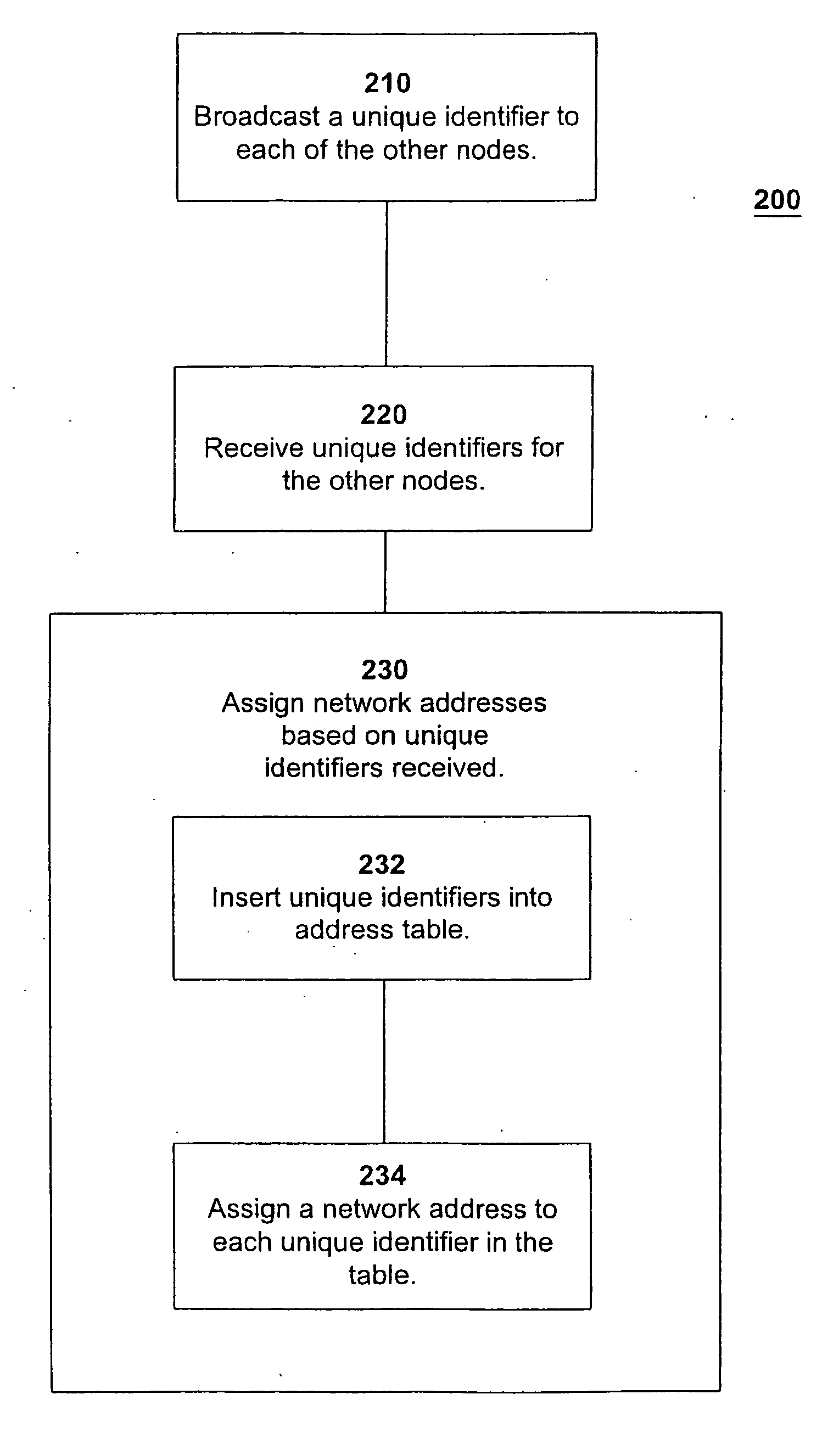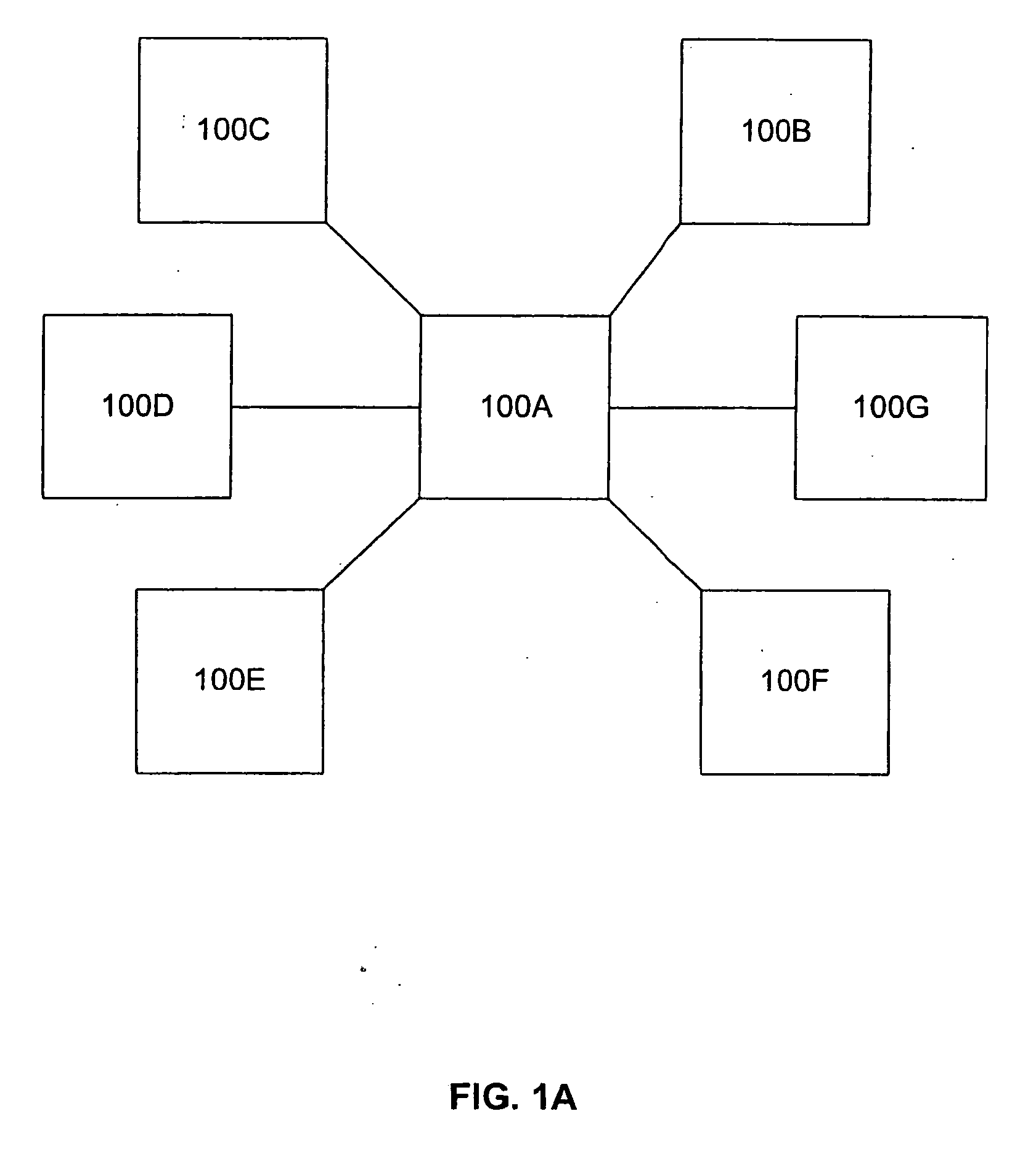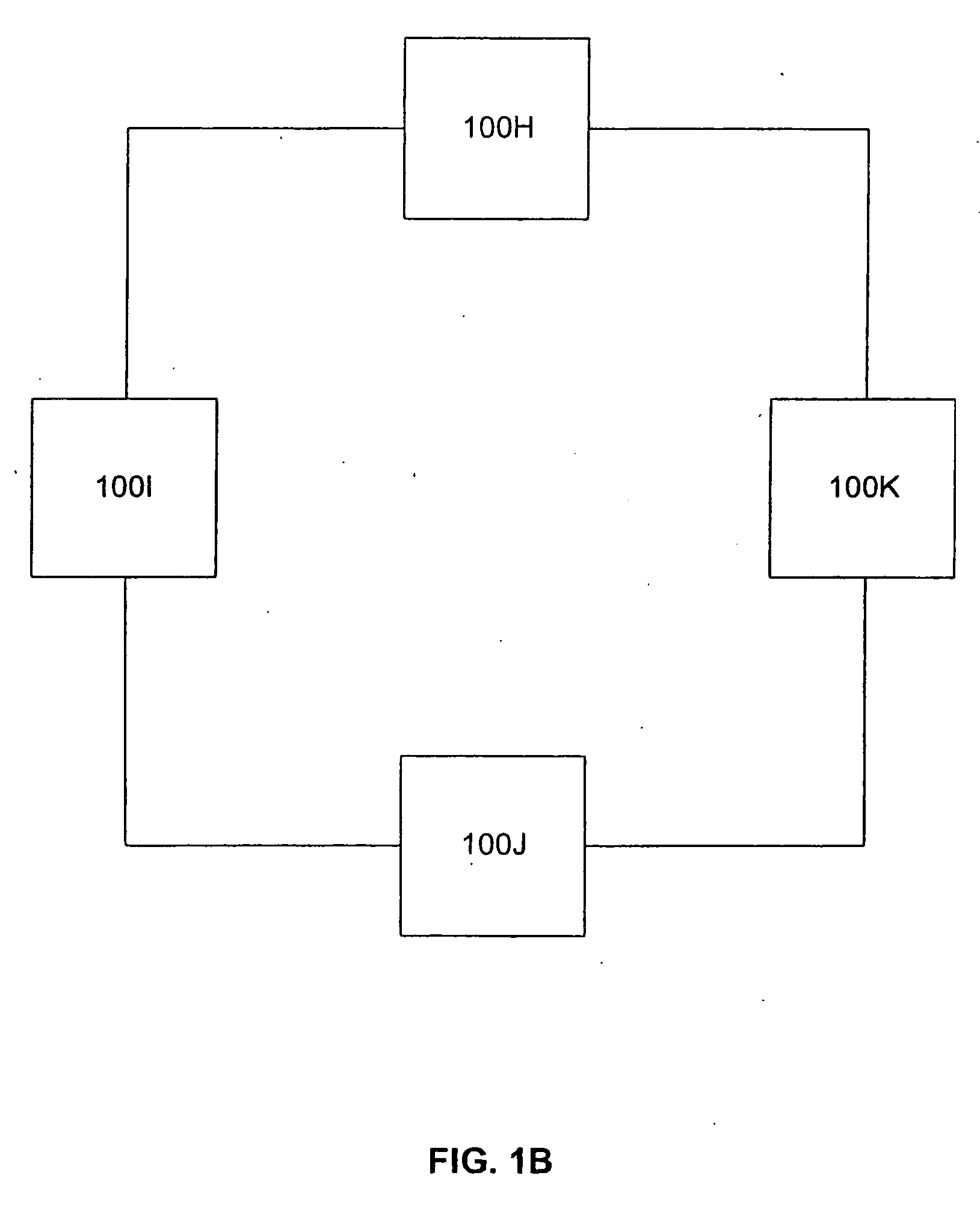Automatic assignment of addresses to nodes in a network
a network and address technology, applied in the field of network configuration, can solve the problems of single point of failure in the network, difficult network management, and low network performance of sophisticated networks, and achieve the effect of relieving the network administrator
- Summary
- Abstract
- Description
- Claims
- Application Information
AI Technical Summary
Benefits of technology
Problems solved by technology
Method used
Image
Examples
Embodiment Construction
[0024] FIGS. 1A-E are block diagrams illustrating various network topologies suitable for use with the present invention. The invention is not limited to these topologies. Any network topology, including topologies in which different networks are linked to each other, can be automatically configured using the present invention. Each of these network topologies includes a number of nodes 100A-X (collectively or generically, nodes 100) which are coupled to each other via network segments. Examples of nodes 100 include personal computers, workstations, servers, other types of computers, routers, switches, and other networking devices. The network segments include any communications medium that can exchange data packets between the nodes, including for example electrical wires, coaxial cable, optical fibers, and wireless.
[0025] The nodes 100 in the network communicate with each other by transferring information over the network segments, for example in data packets. Each of the nodes 1...
PUM
 Login to View More
Login to View More Abstract
Description
Claims
Application Information
 Login to View More
Login to View More - R&D
- Intellectual Property
- Life Sciences
- Materials
- Tech Scout
- Unparalleled Data Quality
- Higher Quality Content
- 60% Fewer Hallucinations
Browse by: Latest US Patents, China's latest patents, Technical Efficacy Thesaurus, Application Domain, Technology Topic, Popular Technical Reports.
© 2025 PatSnap. All rights reserved.Legal|Privacy policy|Modern Slavery Act Transparency Statement|Sitemap|About US| Contact US: help@patsnap.com



